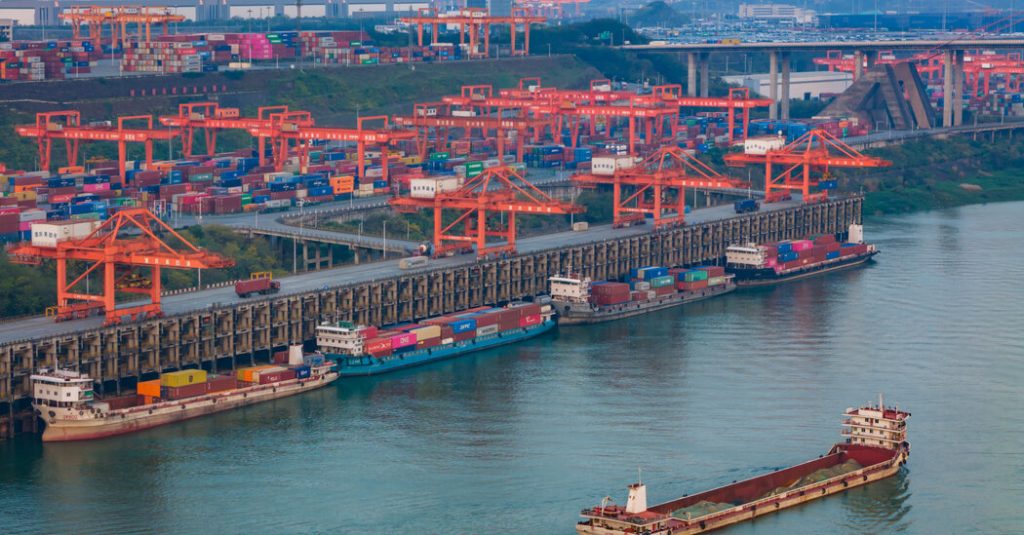President Trump’s decision to impose new tariffs on Chinese imports has presented a complex dilemma for Beijing. Ignoring the tariffs carries the risk of appearing weak domestically, particularly given China’s carefully cultivated image as a rising global power juxtaposed against a supposedly declining United States. However, retaliating aggressively could ignite a global trade war, potentially inflicting more economic damage on China than on the US. China’s economy, heavily reliant on exports, particularly to the US, leaves it vulnerable to trade disruptions. The near trillion-dollar trade surplus enjoyed by China underscores the importance of exports as the primary driver of its economic growth.
China’s initial response was a measured one, opting to challenge the tariffs through the World Trade Organization (WTO). This approach aims to leverage international trade rules and publicly criticize the US for violating them. However, the WTO’s effectiveness has been significantly diminished due to the blockage of judicial appointments by both the Trump and Biden administrations, hindering its ability to authorize countermeasures against trade violations. This weakened state further complicates China’s options for redress. Despite some initial relief that Trump’s early trade criticisms were directed elsewhere, there was little expectation within China that this reprieve would endure. The prevailing sentiment acknowledges the inevitable trade battles to come, given the hawkish stance of the US administration towards China.
The newly imposed tariffs, 10% on goods from China and 25% on goods from Mexico and Canada, coupled with the threat of escalation if retaliatory measures are taken, further intensify the situation. China’s Ministry of Commerce responded with a pledge to safeguard its interests through countermeasures, while simultaneously urging cooperation. This dual approach reflects the delicate balancing act China must perform: projecting strength while avoiding a full-blown trade war. Recent actions by China indicate a willingness to not only retaliate against tariffs but also to raise the stakes.
China has increasingly implemented export controls on key materials and technologies, including critical minerals used in semiconductor manufacturing. This targeted restriction on exports to the US, a response to Biden’s expansion of technology transfer curbs, represents a significant escalation. For the first time, China has also banned third-party countries from re-exporting these materials to the US, a tactic Beijing previously criticized as unfair. While demonstrating resolve, such actions carry significant risks. Restricting exports could deter multinational investment in China, diverting new factories to other countries. Furthermore, it could provoke further retaliation from the US, igniting a dangerous escalatory cycle.
This potential for a tit-for-tat escalation is reminiscent of the trade war during the first Trump administration. China’s initial retaliatory tariffs in 2018 were met with further US tariffs, leaving China with limited American goods to target due to the significant trade imbalance. The 2020 truce halted the escalation but left most tariffs in place. While some in China believe that tariffs primarily hurt American consumers through increased prices, the actual impact is complex and debated. Some Chinese companies absorbed part of the tariff costs by lowering prices to maintain market share, mitigating the impact on US consumers. This, along with a weakening Chinese currency and falling domestic prices, helped offset the effects of previous tariffs and maintain the competitiveness of Chinese goods.
While China’s exports to the US represent a declining share of its total exports, driven by growth in exports to developing countries, China’s reliance on the US market remains significant, albeit indirectly. China’s exports have surged to countries like Mexico and Vietnam, which assemble Chinese components into finished goods for export to the US. This complex supply chain adds another layer of complexity to the trade dynamics. The crucial question now is how many other countries will be targeted by US tariffs. China has developed strategies to manage bilateral tariffs, including paying tariffs on critical parts or shifting final assembly outside China to bypass them. However, widespread US tariffs targeting multiple countries would be far more challenging for China to circumvent. If the US aims to reduce its trade deficits with numerous countries, regardless of the potential domestic economic consequences, it could force these countries to impose their own tariffs on Chinese goods, creating a significant challenge for China.
China’s dependence on trade surpluses has increased since the first Trump administration, coinciding with a weakening domestic economy. The cooling real estate market, job losses in construction, and dwindling savings among middle-class families have heightened the economic stakes. Facing renewed tensions with the US alongside domestic economic fragility, China treads a precarious path, hoping to stabilize the relationship while preparing for potential further deterioration. The delicate balance between projecting strength and avoiding a damaging trade war defines China’s current predicament.


